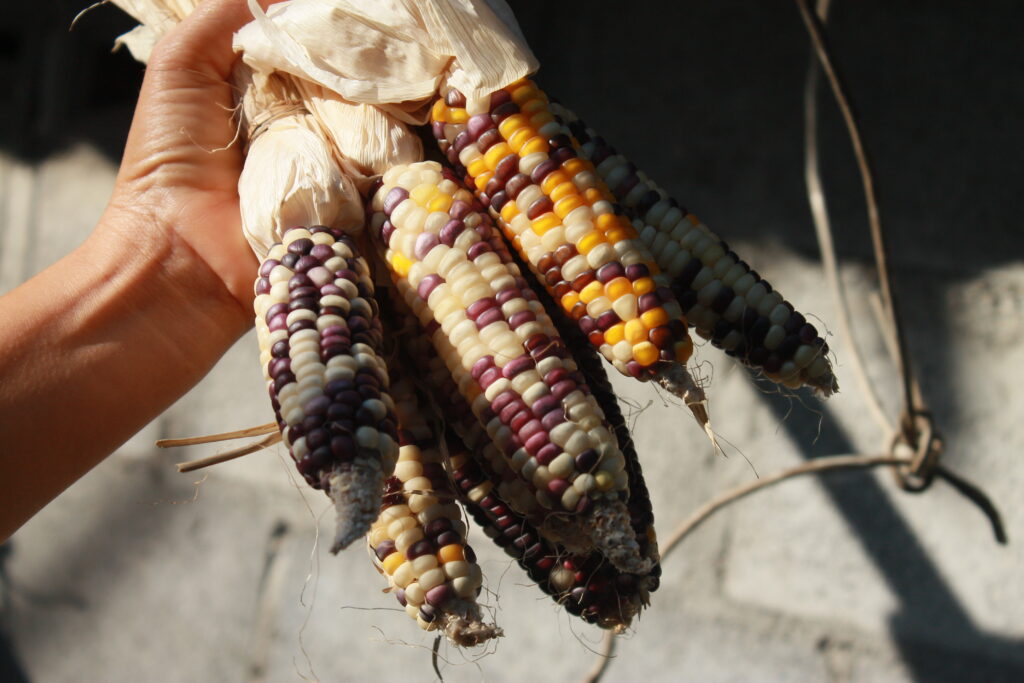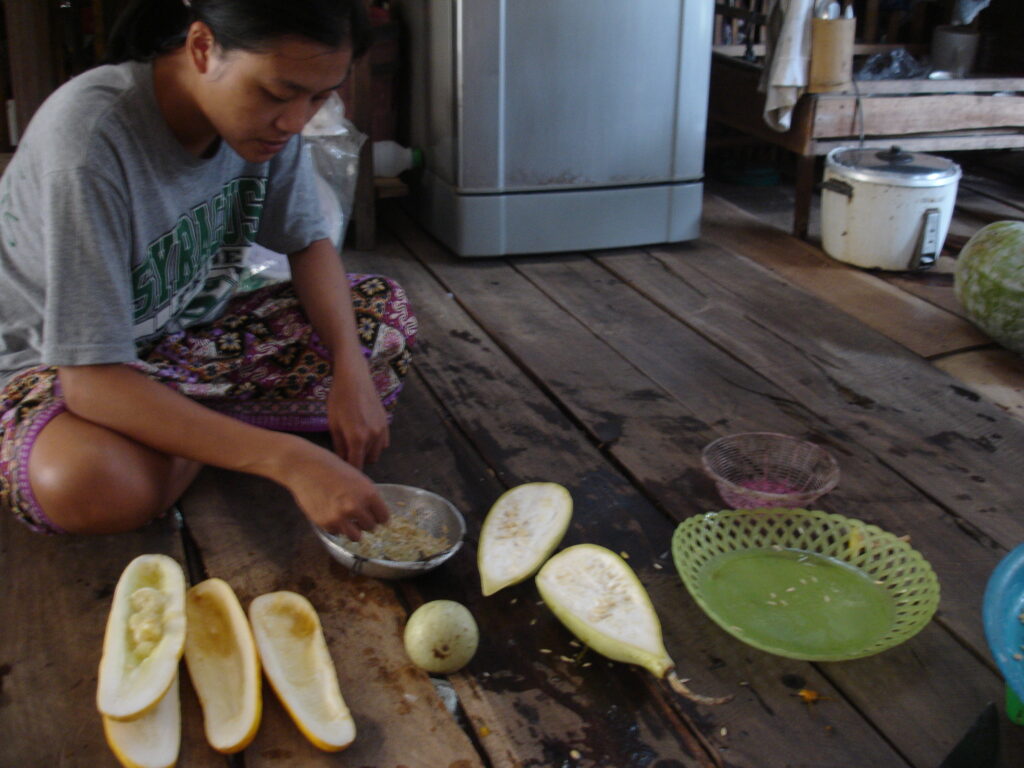Lately, there has been quiet movement from giant seed corporations seeking to amend the Plant Variety Protection Act B.E. 2542 (1999) to serve their own profit-seeking interests.
We would like to present a story about the parallel approaches to the rights over biological resources: between the intellectual property system that caters to industry and commerce, and the community rights system that has a long history of development.
| Intellectual Property | Community/Collective Rights |
| 1959 IUPGR-FAO – Genetic Resources as a Common Heritage of Humanity | |
| 1961 UPOV – Birth of PBR-Plant Varieties | |
| 1978 UPOV-78 – (Exceptions)Allows farmers to save seed for replanting | |
| 1980 U.S. allows patenting of micro-organisms (Diamond v. Chakrabarty) | |
| 1991 UPOV-91 – Increases monopoly power, prohibits farmers from saving seed for replanting | |
| 1992 CBD – Convention on Biodiversity – State sovereignty over PGR, Community Rights, and Access and Benefit-Sharing (ABS) | |
| 1999 Plant Variety Protection Act – B.E. 2542 (1999) – Based on UPOV 78 + CBD principles | |
| 2000 WTO/TRIPS – Mandates intellectual property rights for plant varieties | |
| 2001 ITPGR-FA – International Treaty on Plant Genetic Resources for Food/Ag. – Multilateral System, Seed Rights |
The intellectual property system for plant varieties officially began in 1961 with the establishment of the International Convention for the Protection of New Varieties of Plants (UPOV), which granted rights to plant breeders to control the use of the varieties they developed. This system, while not a direct patent, was the first mechanism to turn plant varieties into private property.
In 1980, the US Supreme Court’s ruling in the case of Diamond v. Chakrabarty paved the way for genetically modified organisms created by humans to be patented. This was the most significant turning point in the history of rights over biological resources, as it was the first time that life at the microbial level was legally recognized as a full-fledged commercial property.
Subsequently, UPOV 1991 extended the power of plant breeders even further, prohibiting farmers from saving the seeds of protected varieties for use in the next season unless they received permission from the seed company.
The new plant variety convention was pushed to become a global standard through the World Trade Organization’s (WTO) TRIPS Agreement in 2000, which required member countries to establish a system for plant variety protection or to allow patents on living organisms.

Community Rights: Resistance Rooted in Local Practices
On the other side of history, the concept of “biological resources as a common heritage of mankind” emerged in 1959 through a proposal by scientists and environmentalists at an FAO forum, which called for the management of genetic resources as a shared heritage, not the property of any single person.
This concept was continuously pushed and became a key principle of the Convention on Biological Diversity (CBD) in 1992, which recognized the sovereignty of states over the biological resources within their territories and established the principle of “Access and Benefit-Sharing” (ABS), emphasizing the need for consent from the communities who are the owners of biological resources and traditional knowledge.
Later, in 2001, the International Treaty on Plant Genetic Resources for Food and Agriculture (ITPGRFA) strengthened a multilateral system for sharing resources, which aims to maintain fairness and openness in the use of plant genetic material essential for global food security.
Even though Thailand joined the WTO, it refused to follow the UPOV 1991 law and instead drafted its own domestic law, the Plant Variety Protection Act B.E. 2542 (1999). This law combines models from both UPOV 1978 and the CBD. In other words, while it grants rights to plant breeders, it also includes mechanisms to protect the rights of farmers. To this day, this law serves as a model for many other countries.
Naturally, this legal model is not favored by multinational seed corporations. There have been several attempts to amend and dismantle this law, both by government agencies and through FTA negotiations.
A key analysis of this approach is a comparison that highlights the differences in terms of approaches, processes, and outcomes.
Soon, we will see this movement again, and we will not stand still and allow our country’s and the world’s rules to be solely dictated by corporations, because biological resources and biodiversity are connected and important to agriculture, food, and the way of life for all of us.
Guidelines for the Protection of Biological Resources
| Intellectual Property | Hybrid (IPR-Community) | Collective/Community Rights |
| 1. New Plant Variety D-Distinctness U-Uniformity S-Stability | 2. Local Endemic Plant Variety Preserved by the community, different from other varieties, not widely cultivated | 3. Common Local Plant Variety Widely cultivated & included in what is not 1, 2, or 4 4. Wild Plant Variety Plant varieties that grow naturally in the wild and have not been cultivated or developed by anyone |
| Those who lack production/sales/ export/import Protection duration: 12, 17, 27 years Rightsholder: individual/ juristic person Must apply for protection. | Those who lack production/sales/ export/import Protection duration: 12, 17, 27 years (Renewable every 10 years) Rightsholder Registered community Benefit-sharing: – Conservationist/Developer 20% – Community 60% – Local Administrative Organization 20% (Must apply for protection) | Automatically protected Benefits belong to the state and the Plant Variety Protection Fund |
| 5. People’s Biodiversity Register—PBR According to the Convention on Biological Diversity (CBD) May or may not have laws like India’s Biological Diversity Act, 2002 |

